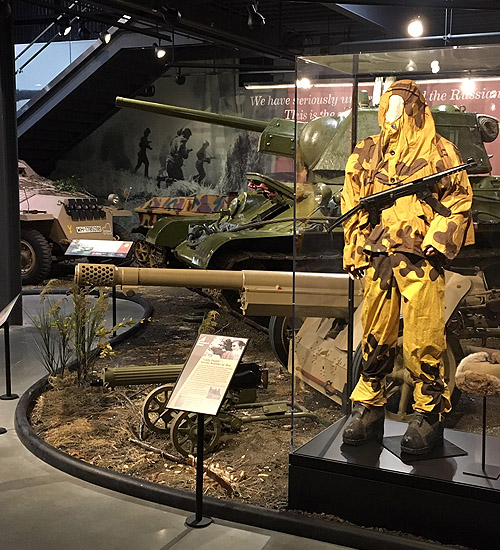2025 American Heritage Museum / Collings Foundation Annual Magazine
issuu.com
Welcome to Issuu’s blog: home to product news, tips, resources, interviews (and more) related to content marketing and publishing.Eastern Front
7.5 cm Pak 97/38 – GER/FRA | ANTI-TANK GUN
Sd.Kfz. 251/1 Ausf. D – GER | PERSONNEL CARRIER/PRIME MOVER
Sd.Kfz. 2 Kleines Kettenkrad – GER | PERSONNEL CARRIER/PRIME MOVER
15 cm Nebelwerfer 41 – GER | ROCKET LAUNCHER
StuG III Ausf. G – GER | TANK DESTROYER
3.7 cm Pak 35/36 – GER | ANTI-TANK GUN
Borgward IV Ausf. B – GER | REMOTE DEMOLITION VEHICLE
PM M1910 – RUS | HEAVY MACHINE GUN
The battles on the Eastern Front constituted the largest military confrontations in history. They were characterized by unprecedented ferocity, destruction on a massive scale, mass deportations, and immense loss of life due to combat, starvation, exposure, disease, and massacres. Of the estimated 70-85 million deaths attributed to World War II, around 40 million occurred on the Eastern Front. The Eastern Front was decisive in determining the outcome in the European Theater of Operation in World War II, with the Red Army inflicting by far the most damage on the armies of Nazi Germany and the Axis nations. The two principal powers were Germany and the Soviet Union, along with smaller Axis allies like Finland, Romania, Bulgaria, Hungary, and Italy. Though never engaged in military action in the Eastern Front, the United States and the United Kingdom both provided substantial material aid to the Soviet Union.
Nazi Germany and the Soviet Union were essentially allied in the ruthless double invasion of Poland in September 1939, and their cooperative annexations of other small states, in whole or in part, in 1939-1940. However, in terms of ideology and imperial and territorial ambition they remained deeply at odds. Germany thus launched Operation Barbarossa, its invasion of the Soviet Union, on June 22nd, 1941, the summer solstice and hence true “longest day” of the war. From the first hours, Nazi death battalions (Einsatzgruppen) carried out mass murder campaigns. The fighting between the armies was brutal and merciless. In the first winter alone, 3.5 million Soviet POWs were starved to death or murdered by the Nazi regime. But the invasion slowed by December 1941, halting out just miles from Moscow. Another effort by the Germans stalled in Stalingrad in late 1942, before the turning point came at Kursk in the summer of 1943, while the Western Allies landed in Sicily and stepped up their bombing campaign against Germany itself. In the ‘bloodlands’ of the Eastern Front, years of hard attritional war were made worse by multiple genocides and two of the worst, bloodiest tyrants in all history: Adolf Hitler and Josef Stalin. Together, they oversaw mass death and a war without garlands on the ground that exceeded in horror and malice and death and destruction any other war in human history.
A strategic air offensive by the United States Army Air Force and Royal Air Force played a significant part in reducing German industry and tying up German air force and air defense resources, while the Red Army engaged by far the lion’s share of German forces on the ground.




